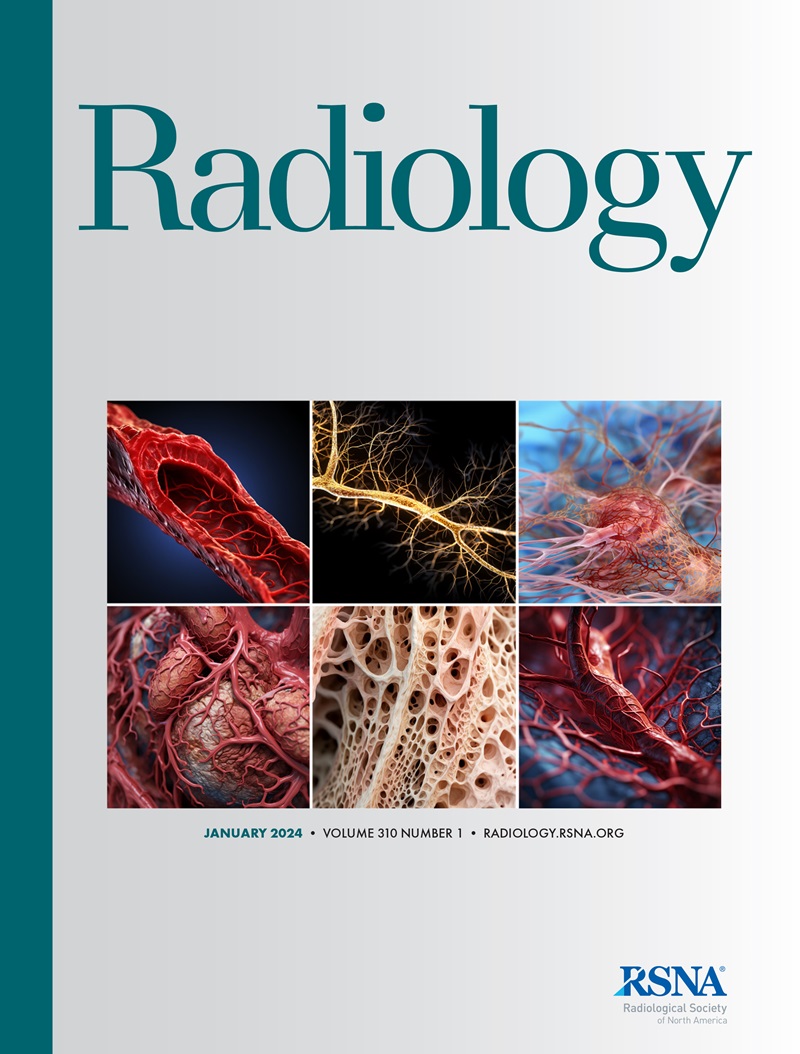肩袖肌肉的评估:最新的MRI和临床意义。
IF 12.1
1区 医学
Q1 RADIOLOGY, NUCLEAR MEDICINE & MEDICAL IMAGING
引用次数: 0
摘要
肩袖撕裂是引起肩痛的常见原因,根据撕裂类型的不同,会严重限制日常活动并影响生活质量。肌腱撕裂后,RC肌发生退行性改变,包括脂肪变性和体积萎缩。脂肪肌退变的程度与RC重建后较差的功能和手术结果有关,RC肌肉的评估是决定是否进行RC修复的最重要因素之一。在MRI的基础上,有多种定性和定量的方法来评估RC脂肪肌变性和体积萎缩。这篇综述提供了RC肌肉评估的详细概述,包括评估RC肌肉的定性测量,如Goutallier分级、切线标志和鱼脊骨标志。另一个重点是最先进的定量MRI技术,包括基于化学位移的技术,如单体素磁共振光谱、多点水脂肪分离和磁共振弛豫测量。此外,定性和定量肌内脂肪评估的临床相关性得到了解决,并讨论了其对治疗计划和患者预后的潜在重要性。本文章由计算机程序翻译,如有差异,请以英文原文为准。
Assessment of the Rotator Cuff Muscles: State-of-the-Art MRI and Clinical Implications.
Rotator cuff (RC) tears are a common cause of shoulder pain and, depending on the tear pattern, can substantially limit daily activities and affect quality of life. After a tendon tear, the RC muscle undergoes degenerative changes, including fatty degeneration and volume atrophy. The extent of fatty muscle degeneration has been associated with poorer functional and surgical outcomes after RC reconstruction, and the evaluation of the RC muscles is one of the most important factors for deciding whether to perform an RC repair. A variety of qualitative and quantitative methods are available to assess RC fatty muscle degeneration and volume atrophy based on MRI. This review provides a detailed overview of the RC muscle assessment, including qualitative measurements to assess the RC muscles, such as Goutallier grading, tangent sign, and fish backbone sign. Another focus is state-of-the-art quantitative MRI techniques, including chemical shift-based techniques such as single-voxel MR spectroscopy, multipoint water-fat separation, and MR relaxometry. Furthermore, the clinical relevance of qualitative and quantitative intramuscular fat assessment is addressed, and its potential importance for treatment planning and patient outcomes is discussed.
求助全文
通过发布文献求助,成功后即可免费获取论文全文。
去求助
来源期刊

Radiology
医学-核医学
CiteScore
35.20
自引率
3.00%
发文量
596
审稿时长
3.6 months
期刊介绍:
Published regularly since 1923 by the Radiological Society of North America (RSNA), Radiology has long been recognized as the authoritative reference for the most current, clinically relevant and highest quality research in the field of radiology. Each month the journal publishes approximately 240 pages of peer-reviewed original research, authoritative reviews, well-balanced commentary on significant articles, and expert opinion on new techniques and technologies.
Radiology publishes cutting edge and impactful imaging research articles in radiology and medical imaging in order to help improve human health.
 求助内容:
求助内容: 应助结果提醒方式:
应助结果提醒方式:


